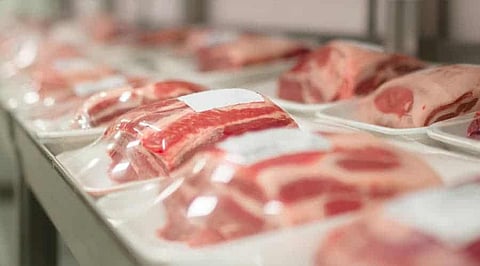
- Insights
- Cryptocurrencies
- Stocks
- White Papers
- Industry
- Geography
- Insights
- Cryptocurrencies
- Stocks
- White Papers
- Industry
- Geography


In every industry, the primary reason companies adopt new technologies is to improve efficiency. Today thanks to modern disruptive technologies, the food industry is booming. While the meat industry was a late adopter, companies are currently seeking to transform themselves digitally through better data collection and more control over their machinery. However, now, when production rates have declined due to the coronavirus outbreak, most of the companies have either closed plants or are operating with a reduced workforce. So, amid this crisis, automation is being posed as the best panacea for this.
According to Reuters, nations like the United States, Canada, and Brazil, which are major meat producers and exporters have adopted technology slower than Northern Europe or Japan and lagged other industrial factories in automating their operations. However, COVID-19 dealt a heavy blow to this labor-intensive sector while exposing its greater reliance on elbow-to-elbow working conditions. So, prior to the pandemic, the meat processing industry was among the most unsafe, with massive rates of carpal tunnel and other repetitive motion injuries. The chances of risk for product contamination has high. Further, meat cutting is one of the most hazardous food manufacturing operations for both worker and product safety. And meat packaging activities for all types of parts and cuts have to be tailored individually to the product, shape, and specific characteristics.
Meanwhile, harsh working conditions, long hours with no breaks combined with low pay make these jobs highly undesirable, resulting in low recruiting. So, it is a good thing that COVID-19 highlighted the urgency to shift to automation to solve its labor deficiency. Moreover, with an emphasis on social distancing, the threat to meatpacking, meat processing, and distribution center employees has researchers hunting for a new production model.
Generally, automation can be embedded into and throughout the whole process, from production to slaughtering to processing. Automation and robotics can mitigate the labor situation, not just in taking up human employees' place but also in providing less laborious jobs and more of an oversight and management of systems.
Companies like Tyson Foods, Smithfield, Cargill and JBS are looking into ways to incorporate more automation as they modernize their plants. Tyson Foods, which is the poultry titan of the meat industry, has rapidly increased its investments in automation. During this summer, Tyson tested a robot at its Arkansas automation center that uses machine vision to move chicken breasts from a conveyor belt into tray packs for sale in grocery stores. Over the past three years, Tyson Foods has invested over US$500 million, including the founding in August 2019 of the Tyson Manufacturing Automation Center (TMAC) in Springdale, Arkansas, near its headquarters.
Smithfield announced it has already invested significant amounts in new robotics technology and other equipment that enables higher levels of automation to occur. E.g. it has included automatic rib pulling and cutting systems that will provide value via vision and x-ray technologies which help in selecting the optimum rib cut from the pork belly, improving yield.
In Brazil, Frimesa's Assis Chateaubriand plant which is under construction in the state of Parana plans to include five robots, costing some 500,000 euros (US$586,000) each. They will perform tasks including cutting open the pig's chest, eviscerating it and slicing the animal in half.
One important thing meat processing companies must pay attention to is that the robot automation must withstand moisture, rust, and other outside elements that could corrode the metal. They must have food-grade level parts and coatings, and they must be USDA-certifiable. Additionally, machinery must also be designed such that they avoid microbiological traps or water stagnation. And the selection of food-grade oils and greases for gearboxes and lubrication systems and cleaning agents must be carefully considered.
Also, activities like deboning, cutting out beef or chicken filets, and others still require the dexterity of the human hand and the human eye, so innovations must be carried in this area too. Additionally, since food safety cannot be compromised especially during this pandemic, and food producers should consider automating their primary packaging line. With the right end-of-arm tools (EOAT), food producers can lower the risk of contamination, boost productivity, and ultimately, stay in business.
